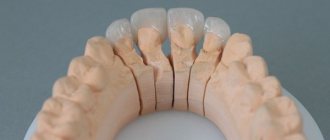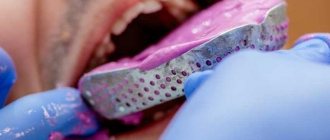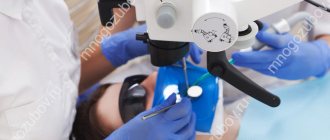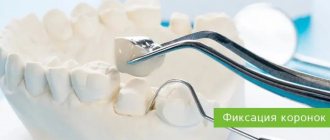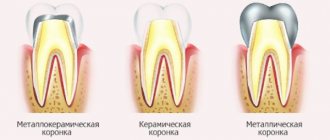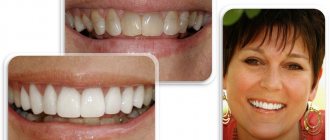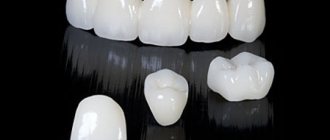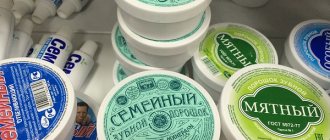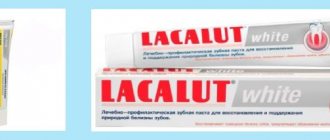KOHLER A-silicone impression compounds are your choice for precision!
Do you know when the first denture was made? 4500 years ago! This prosthesis was found during excavations in Ancient Egypt. Unfortunately for us, scientists were unable to establish the name of that dentist, but he was the first. It is not for you and me, dear colleagues, to conduct a critical analysis of this case of prosthetics. It is obvious that already in those distant times people sought to restore the aesthetics and function of the dental system, relying on the material and technical base that was available to them. As medicine in general developed, dentistry as an independent branch became increasingly important and required an increasingly scientifically based approach. The starting point for the purely scientific development of dentistry is considered to be 1728. It was this year that the famous work of Dr. Pierre Fauchard, “The Dentist-Surgeon, or a Treatise on Teeth,” was published. In his treatise, Dr. Fauchard formulated the main tasks and principles of orthopedic treatment of dental patients.
This short introduction is intended to draw the attention of respected dentists to the fact that quite a few years have passed between these two epoch-making events. The number of questions that arose before the pioneer dentists was constantly growing, and the more answers they found, the more problems appeared to be solved. And now in the modern world, using a huge arsenal of instruments, structurally complex articulators, electronic scanners and milling equipment for diagnosis, planning and treatment, we continue to improve in one of the fundamental components of our activity. In addition to the strict laws of planning dentures or orthopedic structures and observing the principles of their creation, the desire for the lost physiological norm in each specific case obliges us to maintain precision. Precision is a guarantee of success in long-term prosthetic results, along with correct diagnosis and planning.
The relevance of the problem of choosing impression material for removable or fixed prosthetics is higher, the wider the range offered by manufacturers to doctors. Currently the assortment is really large. Which mass should you prefer? What are the selection criteria? Should we believe the words from colorful advertising materials? After all, every manufacturer claims that their impression material is the best. Or at least it's the only one that's right for you. There should be doubts: a dentist, like any other doctor, is in a state of constant analysis of the results of his professional activities. At some point it becomes obvious that there must be certain criteria for evaluating impression materials. These criteria will help the orthopedic dentist choose what is necessary for each specific case. In scientific terms: it is necessary to know the physical properties of the material that comes into our hands; It is desirable that these properties be reflected in precise figures. In this article, we will not consider the classification of impression materials; for this purpose, there are excellent domestic and foreign special publications on materials science. Let us touch only on the basic properties that are of exceptional importance for a practicing orthopedic dentist.
Currently, most orthopedic dentists prefer A-silicone impression compounds. The set of their physical properties allows you to obtain a very high quality print, with an unsurpassed level of detail, even in difficult conditions.
The main advantages of A-silicone masses are:
1. Almost perfect reproduction of details; 2. Ease of mixing and accuracy of dosage of the mass and catalyst due to their homogeneity; 3. Variety of mass viscosities; 4. Dimensional stability and accuracy, maintained during long-term storage (models can be cast 30 days after receiving the impression); 5. Resistance to deformation and ideal restoration of shape after it; 6. Several models can be cast from the impression; 7. High thixotropy; 8. High hydrophilicity; 9. Excellent adhesion between layers; 10. Possibility of high-quality disinfection; 11. Possibility of automatic mixing of both base and corrective mass; 12. No unpleasant taste or smell; 13. Optimal compatibility with mucous membrane and skin; 14. Non-toxic, hypoallergenic; 15. Compatible with galvanization process.
The shortcomings discovered during the use of these impression compounds are quite arbitrary and, in our opinion, are not at all significant:
1. Do not knead while wearing latex gloves; 2. A-silicones are somewhat more expensive than C-silicones.
It is worth noting that all A-silicone impression compounds are manufactured in accordance with the strict quality standards of ISO 4823:2000. It is this standard that defines the standard for the properties of A-silicone impression compounds, which they must comply with. There are a lot of famous manufacturers and, as mentioned above, they are all quite good, each in their own way. The specificity of the work activity of an orthopedic dentist in most cases does not allow one to rely on chance or compromise with accuracy. This, like nowhere else, is understood by the German dental company KOHLER, which has been successfully operating for more than 30 years. As a family business, using innovative production methods and maintaining a constant active dialogue with leading dental experts, the company offers the best impression compounds based on A-silicone today - KOHLERsil. All of them, without exception, have the listed advantages and help to achieve better results.
The base layer of KOHLER sil is produced in a form familiar to all dentists: two pastes - the main one and the catalyst one. There are only 3 types of base layer:
-KOHLER sil 1 , a material created specifically for the two-stage, two-layer impression technique, the high final hardness (72 Shore A), which this material quickly gains, allows you to obtain a high-quality impression without fear of deformation of the base layer during the second stage of the impression.
-KOHLER sil 1 Soft , a material created specifically for the sandwich impression technique. More flexible, allows you to create less dynamic pressure. It has a lower final hardness (64 Shore A), but this does not lead to deformation of the print at the time of its removal, thanks to the accurate calculation of this property.
-KOHLER sil 1 Soft Superhydrophilic , the material is also designed for high-precision impressions using the sandwich technique . What makes this material special is that it has very pronounced hydrophilic properties, which additionally contributes to obtaining a high-quality impression in humid conditions of the oral cavity. The material is sufficiently plastic when the impression is taken correctly. It also does not contribute to the creation of excessive dynamic pressure.
When creating the corrective layer, KOHLER , taking into account the experience of other manufacturers of impression compounds, did not take the path of expanding the range. An overly wide selection of corrective layers creates confusion and in some cases leads to the accumulation of excess materials (and they have an expiration date) or the doctor simply refuses to use unnecessarily complex material systems. And even detailed catalogs sometimes cannot provide clarity when ordering.
The KOHLER sil correction layer is also available in its usual form: standard 50ml cartridges, for a standard 1:1 dispenser. There are only two types of correction layer:
-KOHLER sil 2 Superhydrophilic , a material in the form of a corrective layer, used only in the sandwich technique of taking impressions. This material has a very high thixotropy coefficient, which ensures ease of manipulation in the oral cavity. A very high degree of hydrophilicity is balanced with the viscosity of the material and is designed to provide excellent results specifically in sandwich technology .
(KOHLER Sil 1 Soft and KOHLER Sil 1 Soft Superhydrophilic are recommended as a base layer )
-KOHLER sil 4 Superhydrophilic , a material in the form of a corrective layer, used only in the two-stage two-layer technique. The main problem of the two-stage, two-layer impression-taking technique has so far been the compression that occurs between the area being taken and the inner surface of the corrective layer, which leads to deformation of the base layer. This deformation was facilitated by the too high viscosity of the correction layer. The formation of outlet channels with a special tool helped to cope with this. Now achieving ideal dimensional accuracy of the working model will not be difficult. The cutting of outlet channels in the base layer remained a necessary condition; the viscosity of the corrective layer was adapted specifically to the final hardness of the base layer KOHLER sil 1 KOHLER remained mandatory accompanying properties .
(As a base coat, KOHLER sil 1 is recommended)
A common and very significant property for these types of corrective layers is high tensile strength. Together with other properties, this ensures a guaranteed accurate and stable representation of the space between the gum edge and the tooth surface. It is precisely the precise “tuning” of the properties of the impression mass for a specific technique that allows you to avoid unnecessary diversity and confusion.
The bravest among us say that in 30-40 years we will all be unemployed. The basis for these controversial assumptions were the results of experiments by our Japanese colleagues (In vivo) on laboratory animals, the purpose of which was to try to grow a missing tooth from an animal stem cell. (An article with the results was published in the scientific journal Proceedings of the National Academy of Sciences. The experiment was carried out at the Tokyo University of Sciences.) For now, we are forced to rely on a more “down-to-earth” method of restoring lost teeth, such as dental implantation. The value of this technique for our patients cannot be underestimated. Many people no longer want to hear about bridges supported by their own teeth, especially since the cost of a bridge made of three metal-ceramic crowns, taking into account all expenses (a qualified doctor, a qualified technician, certified equipment and materials) is comparable to the cost of full prosthetics on an implant "Full construction". KOHLER of instruments and aids for dental implantation. Naturally, after creating a reliable support in the form of an implant, it is necessary to continue the work with dignity. That's why KOHLER has developed A-silicone impression compounds for high-precision impressions in implant prosthetics.
For this purpose, you can successfully use KOHLERsil Precision or KOHLER s il Monophase . These are modern A-silicone impression compounds that compete with the polyester impression compounds we are already familiar with. Mixing of the masses is carried out automatically, which eliminates their heterogeneity and ensures the correct ratio of their catalyst and the main substance. Like polyester masses, KOHLER monophasic A-silicones have “controlled fluidity”, but are tasteless and odorless, and inert to the oral mucosa (do not cause irritation). According to the results of the company's research, the most important properties of the A-silicone impression mass from the point of view of the orthopedic dentist exceeded those of polyesters: the thixotropy coefficient was very high, the hydrophilicity (surface contact angle) was at the level of 5°, which indicates a very high hydrophilicity of this impression material mass: any certified disinfectant solution will not have a negative effect on the finished impression; you can perform gum retraction using any method convenient for you. It is more convenient to remove a spoon with a polymerized mass from the oral cavity due to the lower final hardness than polyesters.
Saving wisely is everyone’s natural desire. If there is no difference, then why pay more? KOHLER monophasic A-silicone impression compounds , you are guaranteed not to be forced to buy many additional branded accessories. Does your clinic have a Pentamix, MixStar or MagicMix ? No problem! Buy monophasic impression compound KOHLER s il Mono ph ase in a 5:1 cartridge and get to work! If your professional vision of the situation tells you that when working with monophase material a correction layer will be necessary, simply use KOHLER sil 2 or KOHLERsil 4 . No compromises or tolerances! You will love the perfect fit of the prosthesis frame. Are you faced with the task of making removable dentures for a capricious patient? KOHLER monophasic A-silicones ! Would you like to purchase additional dispensers? It seems to us that this is not very convenient when the office is littered with various devices that can be used “sometimes.” The release form of KOHLER s il Precision is convenient - these are the most common 50 ml cartridges (1:1), each package contains 3 cartridges. Of course, the polyester impression compounds you love have their positive features, but to achieve an excellent result, with all the same, and in some ways superior properties, KOHLER s il Monophase and KOHLER s il Precision are cheaper than their competitors belonging to the class of polyesters. KOHLER monophasic impression compounds can be successfully used for all types of prosthetics, including identifying areas of increased pressure under the base of removable dentures.
Registration of the relationships of the dentition is an integral part of the manufacture of dentures. Many dentists still use the base compound from C-silicone for this. The accuracy of the data obtained with this method of bite registration is questionable. First of all, the inaccuracy is associated with the high viscosity of the base mass and the force that the chewing muscles develop in overcoming it. This technique often leads to displacement of the lower jaw at the time of registration. A modern bite registration mass, such as KOHLER s il Register , has a consistency that does not provide resistance when the teeth are closed, therefore, possible displacement of the lower jaw when registering the relationships of the dentition is eliminated. Along with this useful feature, KOHLER s il Register polymerizes very quickly (45 seconds), quickly gains its final hardness (more than 90 Shore), does not have a springing effect and is convenient for subsequent processing (it is convenient to remove excess with a scalpel or cutter). The plaster casts are easily aligned in the correct position and can be inserted into the articulator.
Lack of teeth. What could be worse? The answer is obvious: only complete absence of teeth. Even the most virtuoso dental surgeon is sometimes powerless in his quest to use implants to help restore lost teeth in some patients. There can be many reasons for this, often not financial, but related to the anatomy and physiology of the individual patient. Despite possible difficulties, prosthetics should take place. The most important functions of teeth, such as chewing food, speech function, and aesthetic function, must be maintained throughout the life of each person. The absence or violation of any of them will entail the development of more serious pathology in the body. Prosthetics using complete removable dentures is one of the most complex types of prosthetics. The doctor has to take into account many features of the patient’s prosthetic bed, correctly determine the boundaries of future prostheses, take into account the type of mucous membrane, and conduct functional tests. The properties of the impression mass will naturally play an important role. KOHLER company produces specialized impression compounds intended for prosthetics in cases of complete edentia. These masses are based on A-silicone. It is convenient to carry out mandatory functional tests by edging an individual tray with KOHLER sil Function . The material has sufficient working time for performing functional tests (60 seconds) using the adhesive included in the delivery set; The edging is securely held on the edge of the individual spoon. Taking into account the characteristics of the mucous membrane of the upper and lower jaw, impression compounds were developed for taking impressions using individual trays: KOHLERsil 4 for the upper jaw and KOHLERsil mandibular for the lower jaw. These are also A-silicone based materials, which ensures an excellent connection between the mass and the edge of the spoon edged with KOHLERsil Function . Both materials have different viscosities. Their additional advantage is the possibility of mutual mixing: in this way the doctor can individualize the consistency and obtain the most accurate impressions, taking into account areas with mobile and sedentary mucosa. This freedom of action also allows you to use any technique for obtaining impressions with individual trays.
This short article is of an advertising nature and is intended to draw the attention of orthopedic dentists to progress in the field of production of impression materials. Making the right choice of materials to obtain accurate impressions is especially important for young professionals: this will allow them to establish a reputation as a good specialist from the very first steps. In our opinion, you should not skimp on the most valuable thing a doctor has – his good name. This is not to say that impression compounds from other manufacturers should not be used: they are all good in their own way, but they also have their own characteristics. It is much more pleasant to use the results of dental progress today, creating “imperishable” dentures, which, unlike those created 4500 years ago, will already be subject to critical analysis by our colleagues. The quality and accuracy of modern dentures will only increase, and competition between orthopedic dentists is only increasing. KOHLER A-silicones allows you to make history, work for long-term results, while earning money and reputation today!
Many of our predecessors participated in fundamental historical events related to the development of medicine and dentistry in particular, not suspecting that they would turn out to be an integral component of modern progress. Today, all orthopedic dentists are involved in this progress; everyone has the opportunity to create the best. Don't be an exception! KOHLER products and will provide you with all the materials for your successful activities in the shortest possible time. And it doesn’t matter how complex the denture you create is - now it’s a standard.
Guryev Vadim, orthopedist-dentist, group consultant
